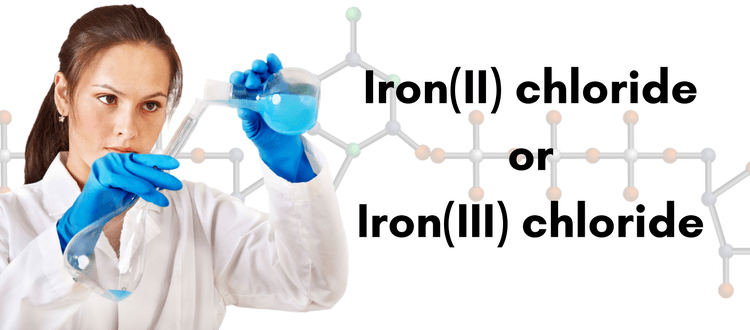How to Write Chemical Compound Names in Journal Manuscripts (Part 3)

In part 1 & part 2 of this series, we discussed scientific nomenclature of plants, animals, and bacteria. In the final part, we will share tips to help you navigate through chemical compound nomenclature for your manuscript. Chemical compound names and formula can be very complex. Naming conventions vary by chemical compound type and involve Greek prefixes and knowledge of how chemicals react to one another. Below is a simplified guide on how to correctly write chemical names and formula in your research paper so you can get started!
Who Decides how Chemical Compounds are Named?
Chemical compounds are named according to the rules established by the International Union of Pure and Applied Chemistry (IUPAC), the International Union of Biochemistry and Molecular Biology (IUBMB), the Chemical Abstracts Service (CAS), the Committee on Nomenclature of the American Chemical Society, and other authorities. The primary function of chemical names is to be as specific as possible: the naming system is designed to ensure that there is no question what chemical compound is being referred to.
The names of chemicals are not capitalized unless they are brand names, such as “Motrin” or “Tylenol”. Generally, the use of brand names should be avoided and generic names should be written instead.
Incorrect: The reaction of aqueous Cobalt(II) with Tylenol was investigated.
Correct: The reaction of aqueous cobalt(II) with acetaminophen was investigated.
IUPAC rules are the most commonly used worldwide. Let us examine some of the common issues scientists encounter with chemical nomenclature.
How Can We Write the Names of Chemical Compounds?
Chemical compounds can be divided into two basic types: ionic and covalent. Ionic compounds are formed between a metal and a nonmetal, while covalent compounds are formed between two nonmetals. The naming system differs between them, which can be a source of confusion for many.
Ionic Compounds
Ionic compounds have a very basic naming system. The first part of the name is simply the name of the metal element, while the second part of the name changes the ending of the nonmetal compound to “ide”. Let us take the chemical compound Al2O3. The numbers tell us how many atoms of each element are present, but they do not affect the name. Al is the abbreviation for aluminum, so that will be the first name in our compound. The second element present, oxygen, changes its ending to “ide” to become “oxide”. Thus, we can write the name of the compound Al2O3 as aluminum oxide.
What do we do when we have two different compounds made up of the same elements? For example, iron and chlorine can combine to form both FeCl2 and FeCl3. Following the rules above would leave us with identical names for different compounds–iron chloride. In this case, we solve the problem by adding a Roman numeral that indicates the charge on the metal element. We can thus write these compounds as iron(II) chloride and iron(III) chloride to remove any confusion.
Covalent Compounds
For covalent compounds or chemical compounds with more than one formula, we use Greek prefixes to indicate how many atoms of each molecule are present. Common Greek numerical prefixes are as follows:
1- mono
2- di
3- tri
4- tetra
5- penta
6- hexa
7- hepta
8- octa
With this in mind, how could we name the compound N2S3? If you said dinitrogen trisulfide, you are correct!
Special Cases and Common Exceptions
You may have read the above and wondered why NO is commonly known as nitrogen oxide rather than nitrogen monoxide. Technically, both of these names are correct, but it is not uncommon for the “mono” prefix to be omitted. When you see a covalent compound written without a prefix, you may assume that “mono” has simply been left out.
There are a number of standard reagents and solvents. Generally, these should be written as their chemical formula rather than spelling out their name. The exception is when the formula is particularly complicated or the reagent/solvent has a common name that is shorter or more precise. For example, we could write H2SO4 rather than sulfuric acid, but either is fine. It would be preferred to write “caffeine” rather than C8H10N4O2 in text due to the long chemical formula. We typically write “Ammonia” rather than NH3, and “water” rather than H2O.
Writing Style
You might want to refer to the ACS (American Chemical Society) style guide after going through this post.
A chemical compound may consist of many parts such as locants, descriptors, and syllabic portions. These can include roman numerals, Greek terms, Latin terms, and more.
- When such chemical compound names appear at the beginning of a sentence or in a title, capitalize the first alphabet
- When such chemical compound names appear when they appear as part of a sentence, use lower case.
Part of a sentence: hydrochloric acid
Beginning of a sentence: Hydrochloric acid
Titles/Headings: Hydrochloric Acid
Part of a sentence: di-2-naphthyl ketone
Beginning of a sentence: Di-2-naphthyl ketone
Titles/Headings: Di-2-naphthyl Ketone
Part of a sentence: 1,2-polybutadiene
Beginning of a sentence: 1,2-Polybutadiene
Titles/Headings: 1,2-Polybutadiene
Remember, locants and descriptors are separated by a hyphen. For example,
6-aminobenzothiazole
di-2-propenylcyanamide
Moreover, stereochemical descriptors are italicized but not capitalized. For example,
Part of a sentence: anti-bicyclo[3.2.1]octan-8- amine
Beginning of a sentence: anti-Bicyclo[3.2.1]octan-8- amine
Titles/Headings: anti-Bicyclo[3.2.1]octan-8- amine
In case of element symbol locants, elements are considered nouns.
Part of a sentence: N-ethylaniline
Beginning of a sentence: N-Ethylaniline
Titles/Headings: N-Ethylaniline
It is equally important to understand the writing style for amino acids and nucleic acids.
For nucleic acids, numbering of the bases is unprimed and that of the sugars is primed. The nucleotide sequence is always presented in 5’ to 3’ direction. For example,
5′-TAGCTAACCCGTTTTAGCGTCGTC-3′
5′-TAGCT AACCC GTTTT AGCGT CGTC-3′
For amino acids, one-letter or three-letter abbreviations are capitalized. For example,
Amino Acid: alanine
3-Letter: Ala
1-Letter: A
Moreover, thre letter abbreviations in a sequence are separated by a hyphen. For example,
Pro-Gln-Ile-Ala
Don’t Forget!
So, as a quick review, when writing chemical names, first consider whether the compound is ionic or covalent. In addition, check whether the name of the compound includes locants or descriptors and whether it appears in the sentence or at the beginning of the sentence. The writing style will depend on these elements.
Did this help you with writing the names of basic chemical compounds? What are some other sources of confusion when you write chemical names? Let us know in the comments!









